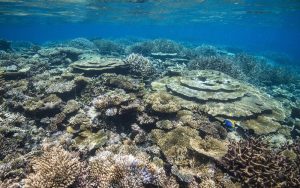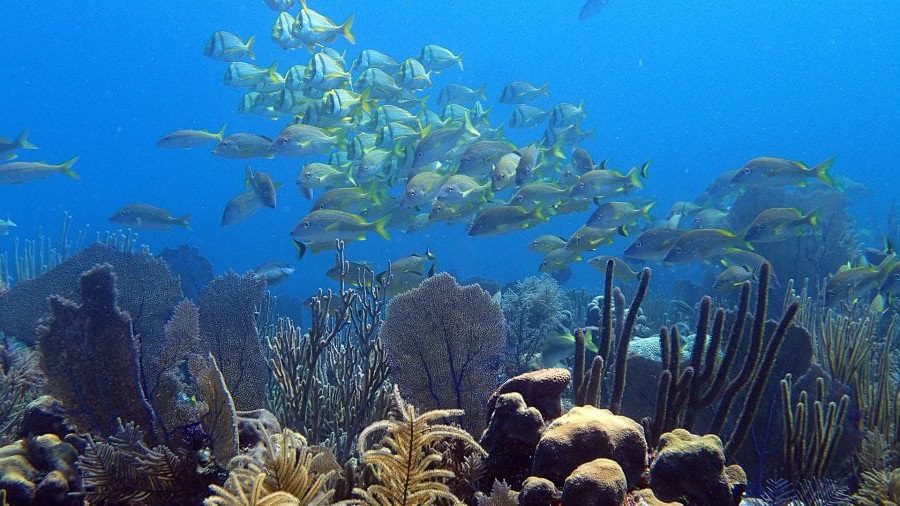Florida coral reefs crisis: Florida Keys coral reefs are in crisis this summer, warning environmentalists and marine enthusiasts. Early bleaching due to record-high water temperatures threatens coral health and survival. Federal scientists are deeply concerned about these vital ecosystems and urge urgent action to mitigate the effects of climate change on these delicate marine habitats.
Iconic Cora Reefs’ research and monitoring coordinator, Katey Lesneski, released a troubling report. NOAA’s initiative protects Florida’s coral reefs. Corals are rapidly losing pigmentation, turning pale and white. Early bleaching indicates that corals are already stressed and may die if not addressed.
Due to the alarming water temperature rise, NOAA scientists raised the coral bleaching warning system to Alert Level 2, the highest heat stress level. The critical level is reached when the average water surface temperature is 1.8 degrees Fahrenheit (1 degree Celsius) above the normal maximum for eight weeks. The Florida Keys’ mid-July average of 85 degrees (29.5 Celsius) has risen to 91 degrees (33 Celsius).
Coral reefs and the symbiotic algae that nourish them are the main issue. Corals expel algae to survive high temperatures, causing bleaching. This process weakens corals, making them susceptible to diseases and malnutrition.
As bleaching began two weeks early, Florida Keys National Marine Sanctuary research coordinator Andrew Bruckner was alarmed. Before August 1, some reefs lost all color. The current bleaching peak is at least a month, if not two, ahead of schedule.
Coral degradation has widespread effects. Over the past 50 years, the Florida Keys have lost 80% to 90% of their coral coverage, a major blow to marine life and communities that rely on reefs to protect against hurricane storm surges. These fragile ecosystems support the region’s fishing, scuba diving, and snorkeling tourism.


Read More: Cyber Legend Kevin Mitnick: A Legacy of Hacking And Redemption
Hope remains despite the dire situation. Florida’s coral reefs are being restored over two decades. Scientists are tirelessly breeding heat-resistant corals and using shade covers and underwater fans to cool the water, saving corals.
Mote Marine Laboratory & Aquarium coral reef restoration program manager Jason Spadaro stressed the importance of breeding corals to increase heat resistance in future generations to preserve these valuable ecosystems. However, the bleaching is worse in the lower Keys than in the north, emphasizing the need for conservation efforts.
Water temperatures rising early this year worsen the situation. Ross Cunning, a research biologist at Shedd Aquarium in Chicago, warned that high temperatures could cause a bleaching event, worsening the crisis.
Scientists have linked the warming waters to human-caused global warming, indicating a dire need to address this issue to save the Florida Keys’ coral reefs. Scientists and conservationists are working together to protect these vital ecosystems as urgency grows.
Despite challenges, Mission: Iconic Reefs’ Katey Lesneski is optimistic. “We are looking for answers and we are trying to do something, rather than just looking away,” she said, emphasizing the importance of collective efforts to protect these natural wonders.
Florida’s coral reefs’ future depends on climate action. For marine life, coastal communities, and the tourism industry that relies on their beauty, these magnificent underwater landscapes must be preserved immediately and collectively.
Our Reader’s Queries
What is the problem with the coral reefs in Florida?
Florida’s coral reefs have suffered a devastating blow, with an alarming 90% decline in corals over the past four decades. This summer, a marine heat wave pummeled the reefs, pushing temperatures to record highs and placing immense pressure on their delicate ecosystem. The extent of the damage is still being evaluated by scientists as water temperatures gradually return to normal.
Is the Florida Keys reef in danger?
NOAA’s Coral Reef Watch has announced that there is a low risk of mass coral bleaching in the FKNMS. The recent marine heat wave in mid-2023 brought the warmest temperatures on record since 1981, according to NOAA. This is the longest-lasting marine heat wave in the region since 1991.
Is there any coral left in Florida?
This means that only a few individual corals remain in the sole living barrier reef in the continental United States, which happens to be the world’s third-largest. It spans around 360 miles from Dry Tortugas National Park to the St. Lucie Inlet. However, these corals are unable to reproduce sufficiently in their natural habitat to sustain a thriving population.
What are the 3 major events threatening the coral reefs at this time?
Coral reefs are facing serious threats like overfishing, destructive fishing practices, pollution, coastal development, and impacts from tourism and recreational activities. These factors are endangering the health and stability of coral reef ecosystems around the world. It is crucial to address these threats and work towards sustainable solutions to protect and preserve these vital underwater habitats.

